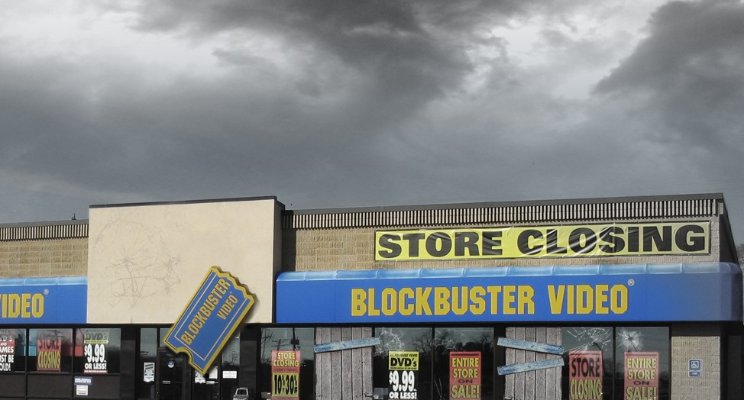
Remember the old days when the typical Friday night ritual usually involved hopping in the car and driving to the local Blockbuster Video to browse the shelves? The movie of your choice would hopefully be in stock, so you could pay the rental fee and head back home for a night of popcorn-filled entertainment, only to head back to the store the next day to return it before the late fees kicked in. And don’t forget the really old days when you also had to “Be Kind and Rewind,” or pay an extra $0.50 fee.
Sound familiar? It seems almost absurd we went through such an inefficient process just to watch a movie.
Nowadays, it is as simple as downloading an app, subscribing to a video streaming service, and hitting play (you still must pop your own popcorn, though). We take for granted that whenever you want a movie or TV show, you can watch it in a moment’s notice. But what makes that all possible? You guessed it: The Cloud.
Once cloud-based streaming services like Netflix, Hulu, and others came along, you could almost set a timer on how fast the old brick and mortar, on-premise, movie rental business would become obsolete. Sure, there was some initial skepticism on the reliability of the service. It was a total paradigm shift, and that often scares people. But once the technology was tested and proven, it snowballed at a rapid pace and quickly became the accepted and expected norm. Why would anyone bother with the inconvenience of the old way, when a much more efficient, cost-effective, and customer-friendly method was introduced?
The same thing is happening to the parking industry. The old revenue and access control technology that has dominated parking facilities for years is quickly becoming obsolete, with cost-effective and efficient cloud-based technology taking hold in the industry.
The days of parking facilities filled with expensive and difficult to maintain on-site servers is quickly becoming a thing of the past. Why settle for old technology, when you can simplify your operations, remove the servers and rely on proven technology: The Cloud? A rack of servers requires someone to manage and maintain it. If you are not an IT expert, you have no business in a server room. I don’t know about you, but whenever I have been in a server room, I was afraid to touch ANYTHING. The cloud essentially takes the burden of onsite IT infrastructure management off the operator and facility, and shifts that to a secured, 24/7-maintained environment that you can access anywhere, anytime via a simple web browser.
Don’t fall into the trap that Blockbuster fell into. They couldn’t adapt quickly enough to the shifting technology landscape and thus, when companies like Netflix found a way to better meet the needs of the consumer, they fall too far behind to catch up which lead to their downfall. In this digital economy, you either adapt, or die.
Many industries have already adopted the cloud as the norm. From manufacturing to IT to service industries, many companies across the industry spectrum are undertaking what are called “digital transformation” initiatives. Digital transformation is the fundamental shift in organizations to adopt and prioritize technology to open new opportunities, gain a competitive edge and better meet customer demands, while controlling costs and risk.
Many companies are even adopting a “Cloud-first” strategy, whereas any new initiatives will be undertaken and purpose-built for the Cloud. In fact, according to Forbes, global IT cloud revenue is expected to hit $390b by 2020. And according to a recent TechRepublic Report, companies are not just adopting cloud technologies, but are also using a cloud-based approach to rapidly shift their entire business model to a Software-as-a-Service model (SaaS). It is expected that by 2020, 73% of all enterprises will operate on SaaS. This model turns the software into a subscription-based offering, used in an on-demand manner, thus allowing users to pay just for services they use, rather than expensive one-size-fits-all license contracts.
Your customers’ demands are ever-increasing, and brand loyalty is becoming less of a priority in the eyes of the consumer. There is just too much competition, and with the ease of access to and posting of social media and peer-to-peer reviews, consumers can turn on you very quickly. If you can’t meet and ultimately exceed their demands, they will find someone else who can and will make sure others know about it via social media. Which, by the way, those social media apps, they’re using? Yes, they run in the cloud.
It is no longer a discussion on whether the technology is proven or not, or whether it is viable. That discussion has been had. The world is moving forward. The only question you need to ask, is which strategy do you want your organization to emulate, Blockbuster Video or Netflix?
The choice is yours, but just remember, popcorn, nostalgia, and $0.50 rewind fees didn’t pay the bills for Blockbuster Video.
-logo(copy).png) About FlashParking
About FlashParking
FlashParking is a parking technology company with a suite of products that together are reinventing parking for both consumers and parking operators. All FlashParking parking solutions—FlashValet, FlashPARCS, FlashMobile—use a cloud-based platform enabling parking operators to tap into real-time data from a mobile phone, tablet or desktop. With FlashParking, parking operators now can control their revenue and parking operations (valet, gated, and mobile payments) from virtually anywhere, while also giving guests the ability to use their mobile device for a superior parking experience.

